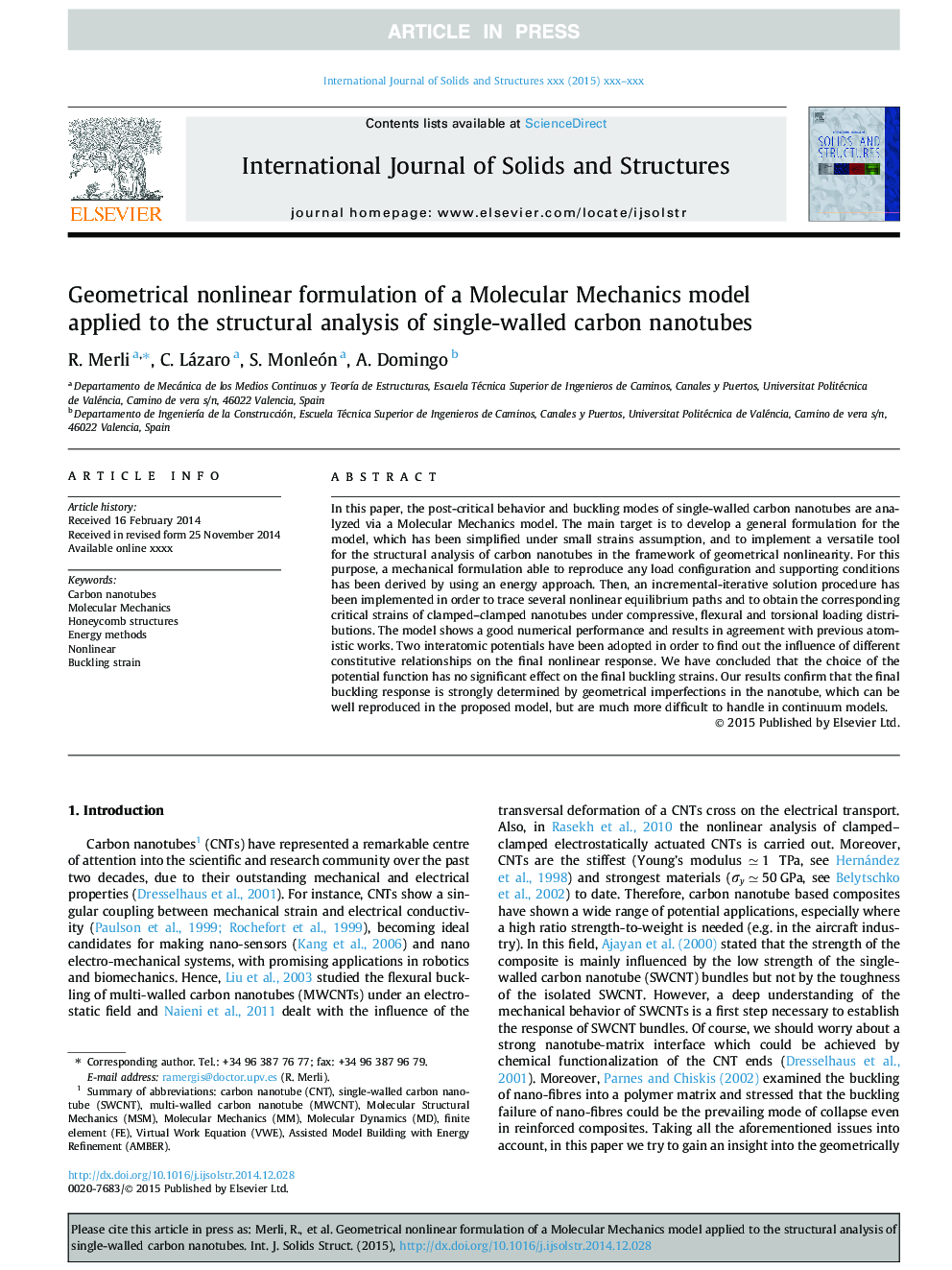| Article ID | Journal | Published Year | Pages | File Type |
|---|---|---|---|---|
| 6748949 | International Journal of Solids and Structures | 2015 | 21 Pages |
Abstract
In this paper, the post-critical behavior and buckling modes of single-walled carbon nanotubes are analyzed via a Molecular Mechanics model. The main target is to develop a general formulation for the model, which has been simplified under small strains assumption, and to implement a versatile tool for the structural analysis of carbon nanotubes in the framework of geometrical nonlinearity. For this purpose, a mechanical formulation able to reproduce any load configuration and supporting conditions has been derived by using an energy approach. Then, an incremental-iterative solution procedure has been implemented in order to trace several nonlinear equilibrium paths and to obtain the corresponding critical strains of clamped-clamped nanotubes under compressive, flexural and torsional loading distributions. The model shows a good numerical performance and results in agreement with previous atomistic works. Two interatomic potentials have been adopted in order to find out the influence of different constitutive relationships on the final nonlinear response. We have concluded that the choice of the potential function has no significant effect on the final buckling strains. Our results confirm that the final buckling response is strongly determined by geometrical imperfections in the nanotube, which can be well reproduced in the proposed model, but are much more difficult to handle in continuum models.
Related Topics
Physical Sciences and Engineering
Engineering
Civil and Structural Engineering
Authors
R. Merli, C. Lázaro, S. Monleón, A. Domingo,
